Filter results
You can narrow down the results using the filters
Audience
Publication type
Topics
Our work
Year
201 results
-
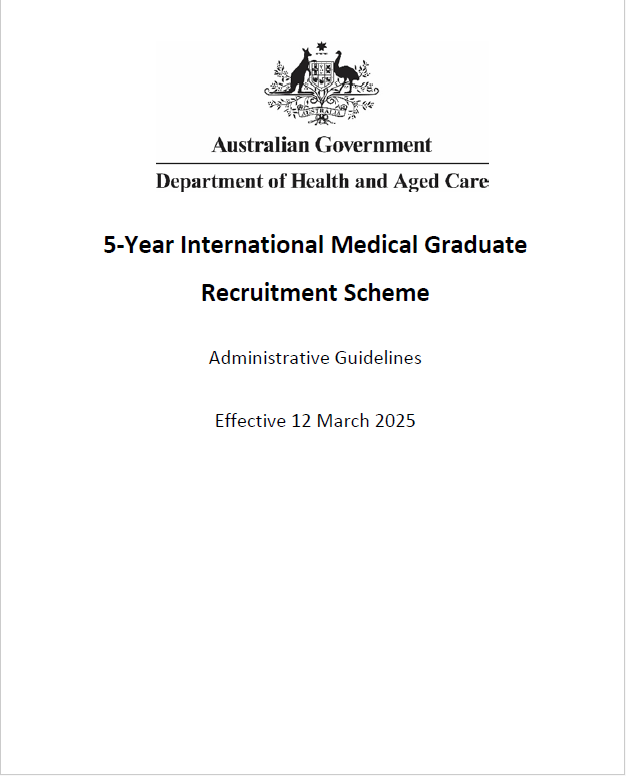
5-Year International Medical Graduates (IMG) Recruitment Scheme Guidelines – March 2025
The 5-Year International Medical Graduates Recruitment Scheme improves access to doctors in regional, rural and remote areas. It increases the supply of doctors to work in these areas where their services are needed the most. -
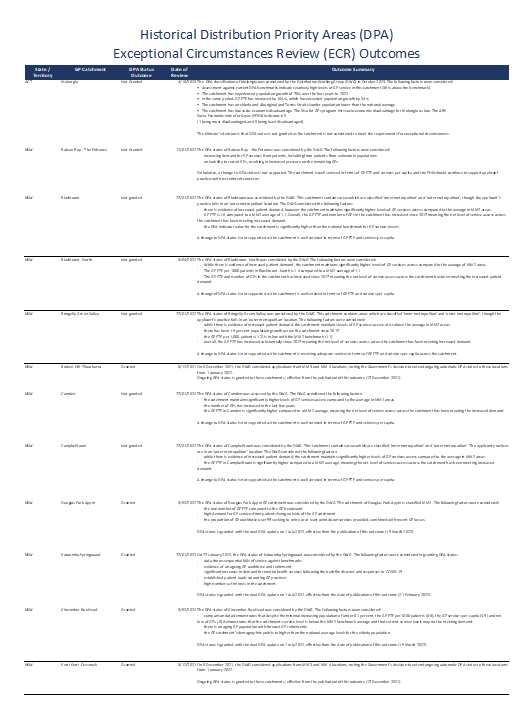
Previous exceptional circumstances reviews and outcomes
The Distribution Working Group (DWG) reviews requests to change an area’s classification. The status recommendation and final decisions are provided to the Minister. All previous outcomes and reviews are published in this document. -
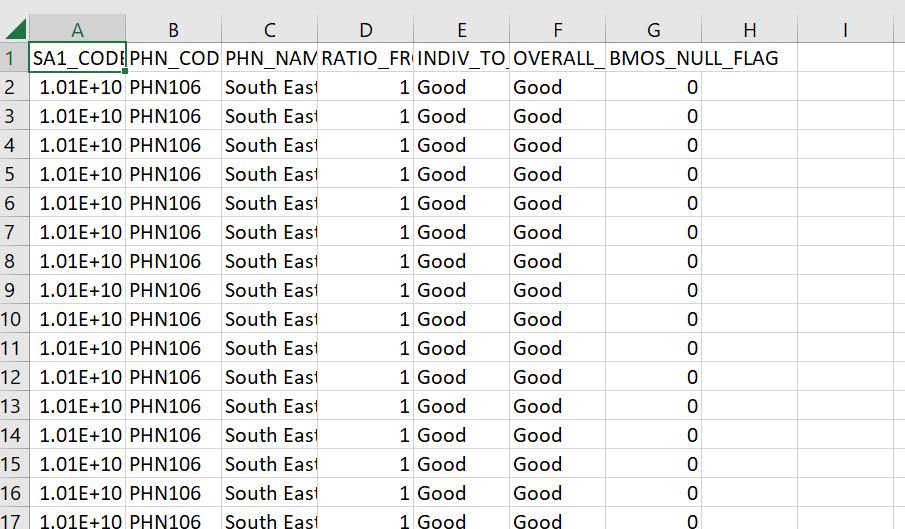
Primary Health Networks (PHN) (2017) – concordance files – Australian Statistical Geography Standards (2021) - Statistical Area Level 1
Researchers can use these concordance files for Australian Statistical Geography Standards (ASGS) Statistical Area Level 1 to Primary Health Networks to undertake geospatial and data analysis. -
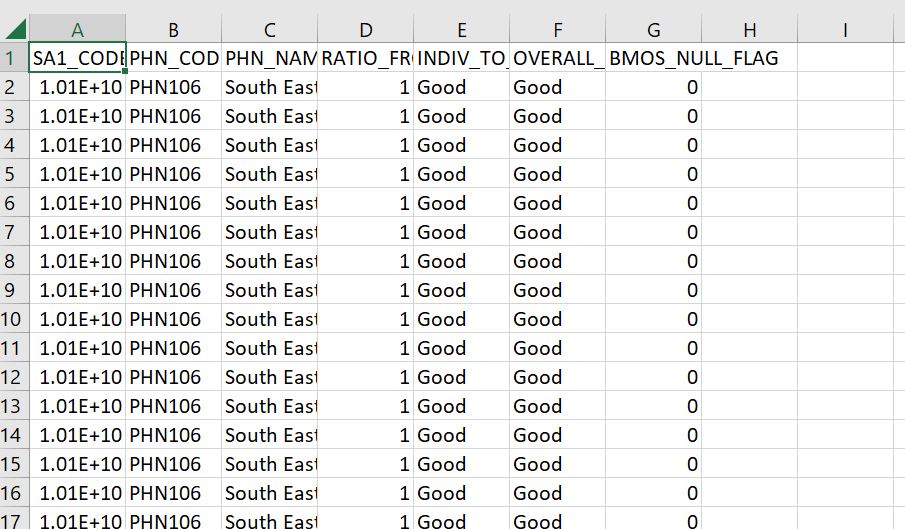
Primary Health Networks (PHN) (2017) – concordance files – Australian Statistical Geography Standards (2021) - Statistical Area Level 2
Researchers can use these concordance files for Australian Statistical Geography Standards (ASGS) Statistical Area Level 2 to Primary Health Networks to undertake geospatial and data analysis. -
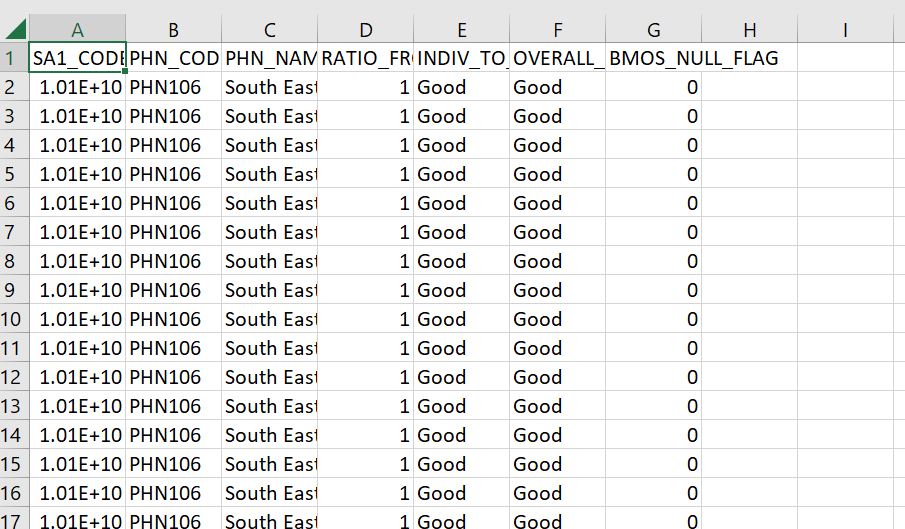
Primary Health Networks (PHN) (2017) – concordance files – Australian Statistical Geography Standards (2021) - Statistical Area Level 3
Researchers can use these concordance files for Australian Statistical Geography Standards (ASGS) Statistical Area Level 3 to Primary Health Networks to undertake geospatial and data analysis. -

Primary Health Networks (PHN) (2017) – concordance files – Local Government Areas (2021)
Researchers can use these concordance files for Local Government Areas to Primary Health Networks to undertake geospatial and data analysis. -
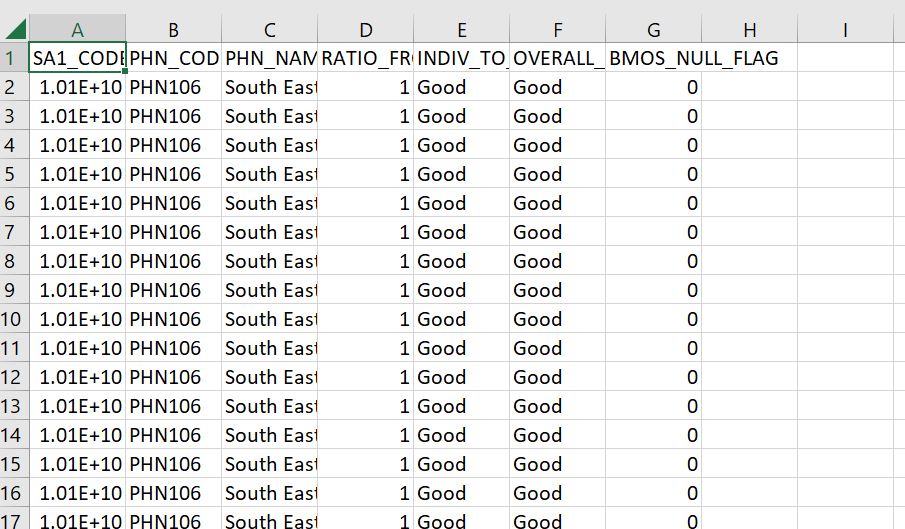
Primary Health Networks (PHN) (2017) – concordance files – Postal Areas (2021)
Researchers can use these concordance files for Postal Areas to Primary Health Networks to undertake geospatial and data analysis. -

Primary Health Networks (PHN) (2017) – concordance files – Commonwealth Electoral Divisions (2021)
Researchers can use these concordance files for Commonwealth Electoral Divisions 2021 to Primary Health Networks 2017 to undertake geospatial and data analysis. -
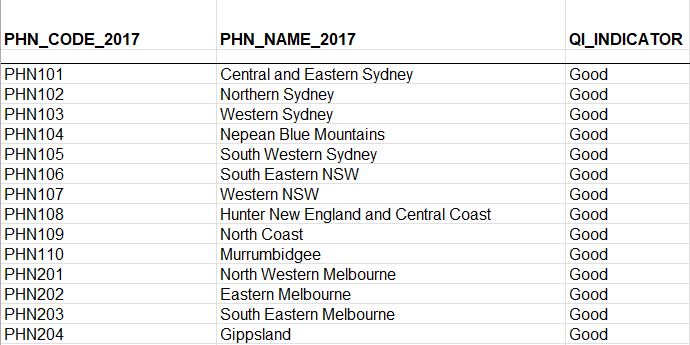
Primary Health Networks (PHN) (2017) – Statistical Area Level 2 (2016)
Researchers can use these concordance files for Australian Statistical Geography Standards (ASGS) Statistical Area Level 2 to Primary Health Networks to undertake geospatial and data analysis. -
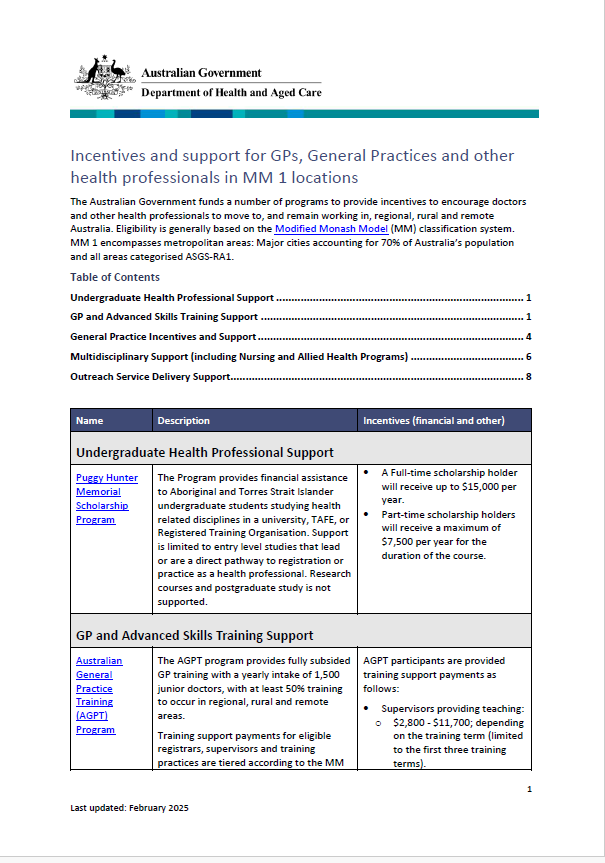
Incentives and support for GPs and general practices in Modified Monash 1 locations
The Modified Monash (MM) fact sheet for category MM 1 covers metropolitan areas. -
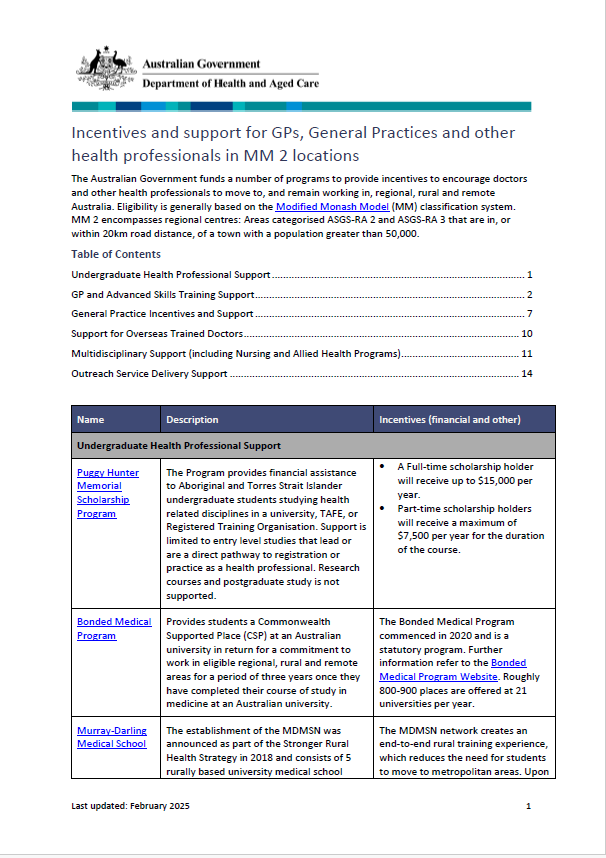
Incentives and support for GPs and general practices in Modified Monash 2 locations
The Modified Monash (MM) fact sheet for category MM 2 covers regional areas. -
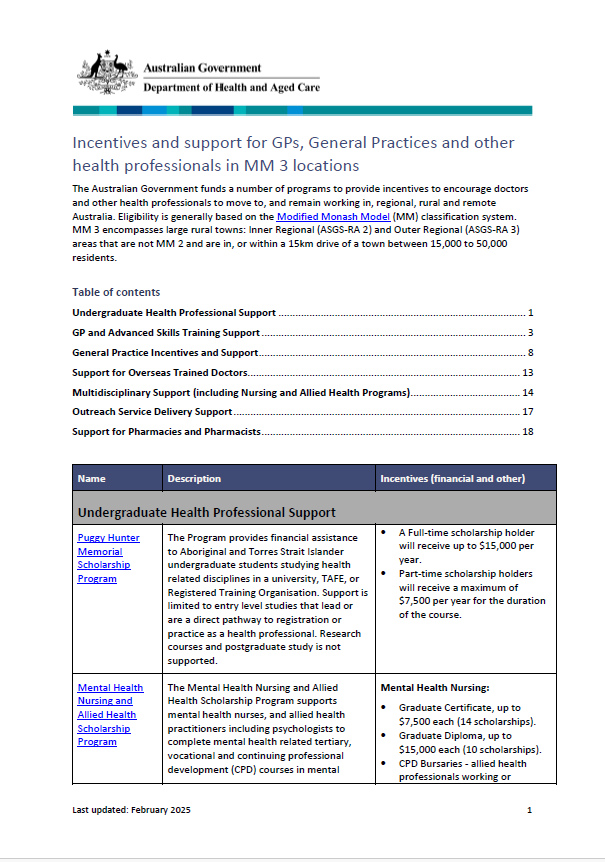
Incentives and support for GPs and general practices in Modified Monash 3 locations
The Modified Monash (MM) fact sheet for category MM 3 covers rural towns. -
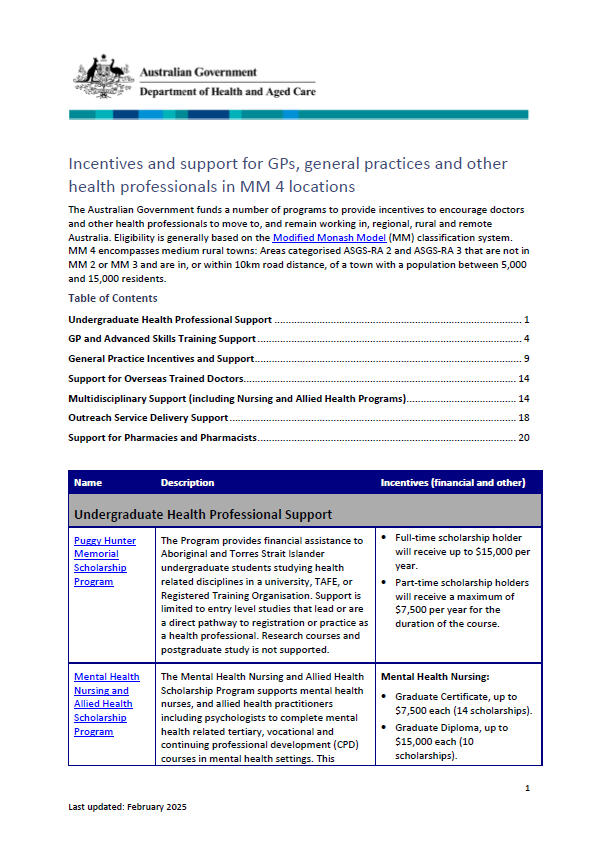
Incentives and support for GPs and general practices in Modified Monash 4 locations
The Modified Monash (MM) fact sheet for category MM 4 covers medium rural towns. -
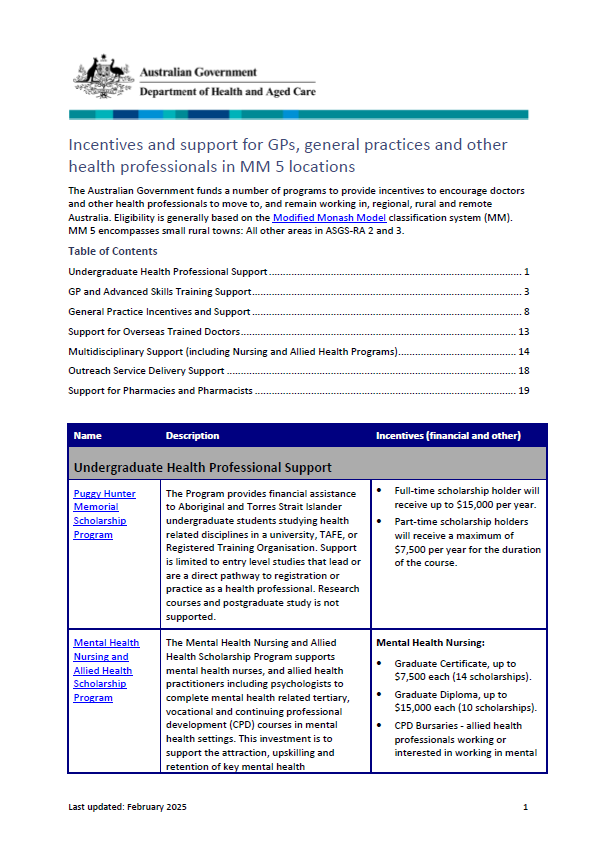
Incentives and support for GPs and general practices in Modified Monash 5 locations
The Modified Monash (MM) fact sheet for category MM 5 covers small rural towns. -
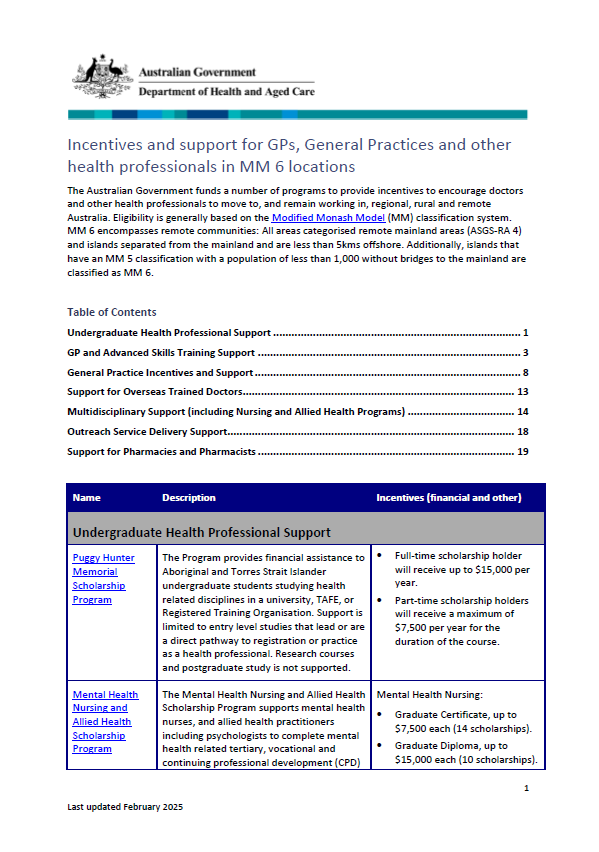
Incentives and support for GPs and general practices in Modified Monash 6 locations
The Modified Monash (MM) fact sheet for category MM 6 covers remote communities. -
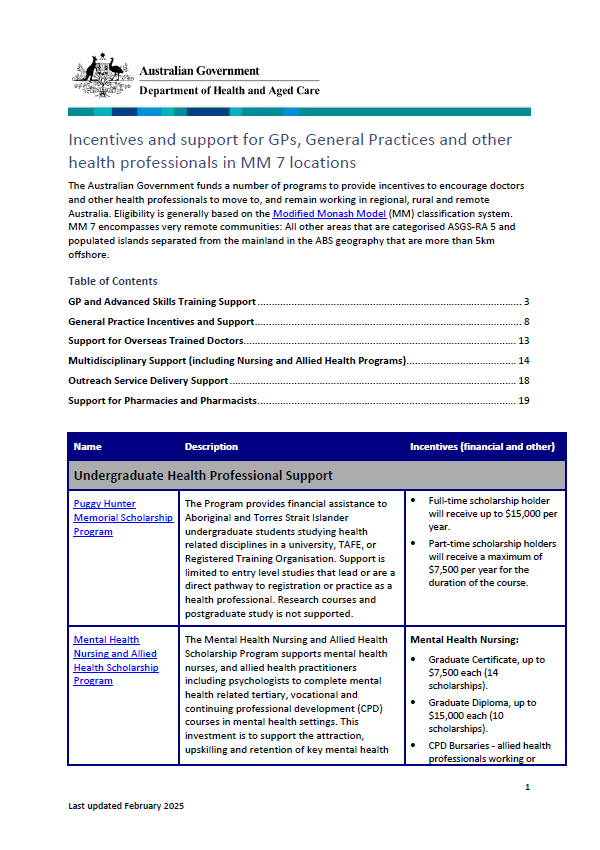
Incentives and support for GPs and general practices in Modified Monash 7 locations
The Modified Monash (MM) fact sheet for category MM 7 covers very remote communities. -
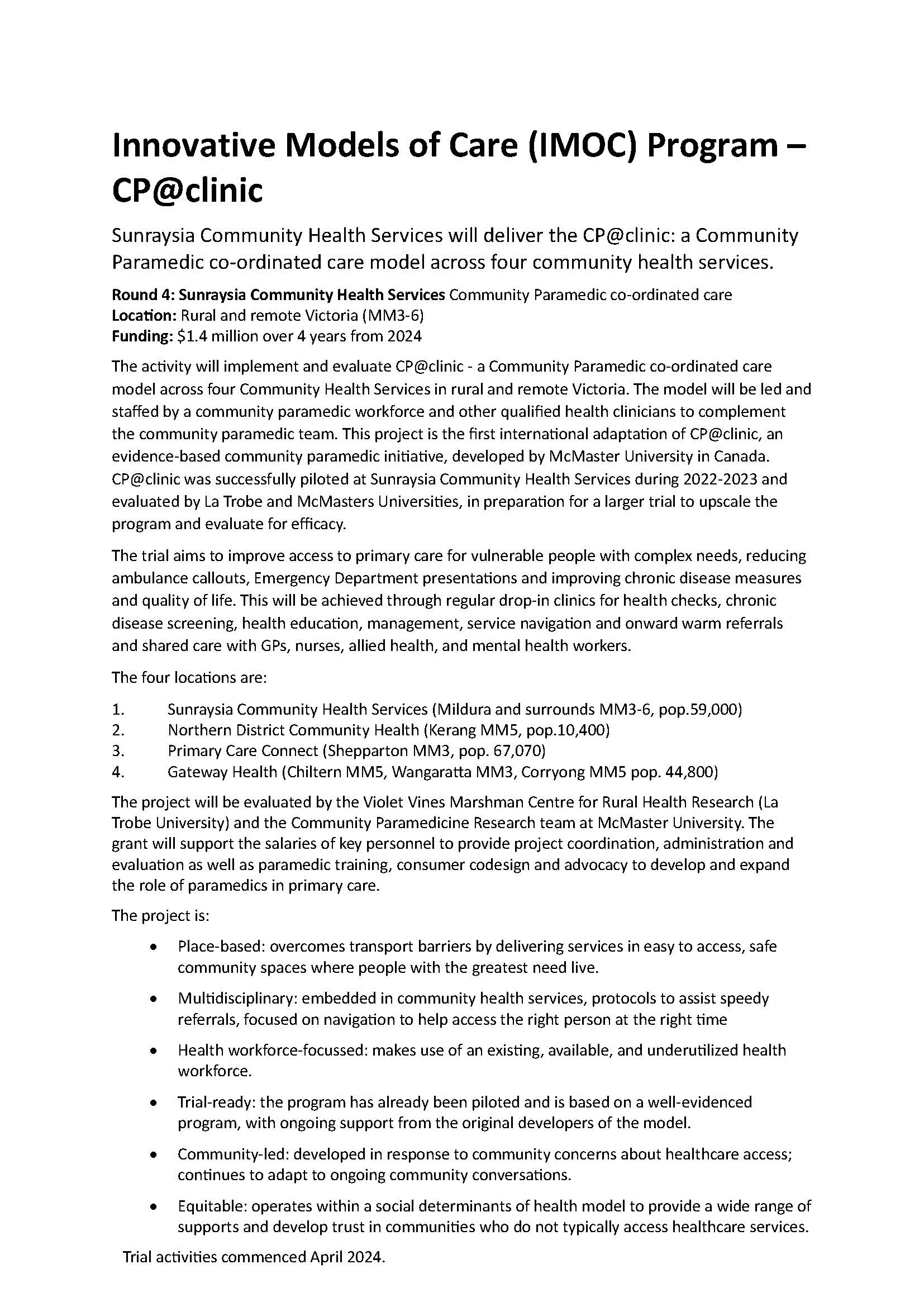
Innovative Models of Care (IMOC) Program – CP@clinic
Sunraysia Community Health Services will deliver the CP@clinic under the Innovative Models of Care Program to provide community paramedic coordinated care across 4 community health services. -
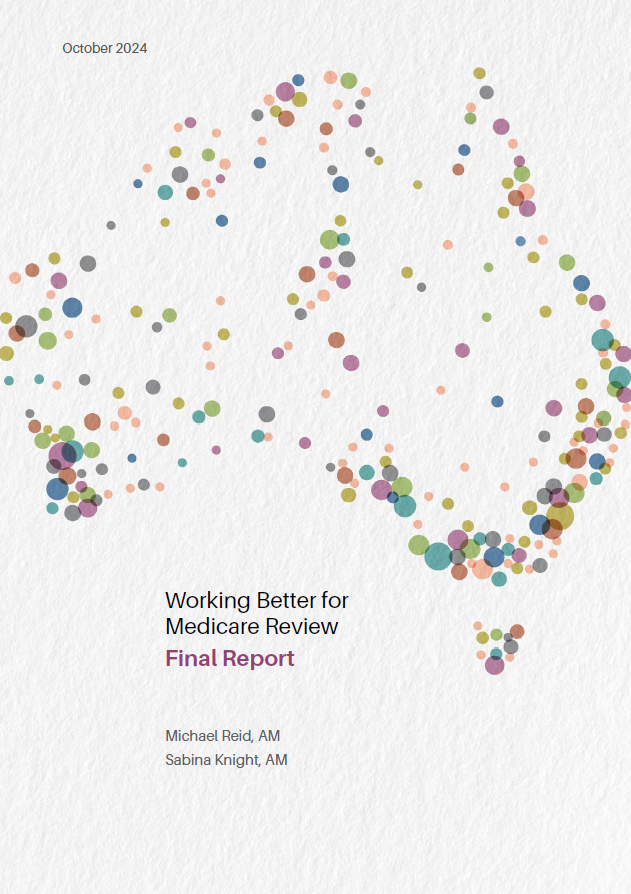
Working Better for Medicare Review – Final report and appendices
This review examined how effective our current health workforce ‘distribution levers’ are. These levers consist of policies and geographic classifications that are intended to distribute health workforce across areas that need them most. Read the report and its appendices. -
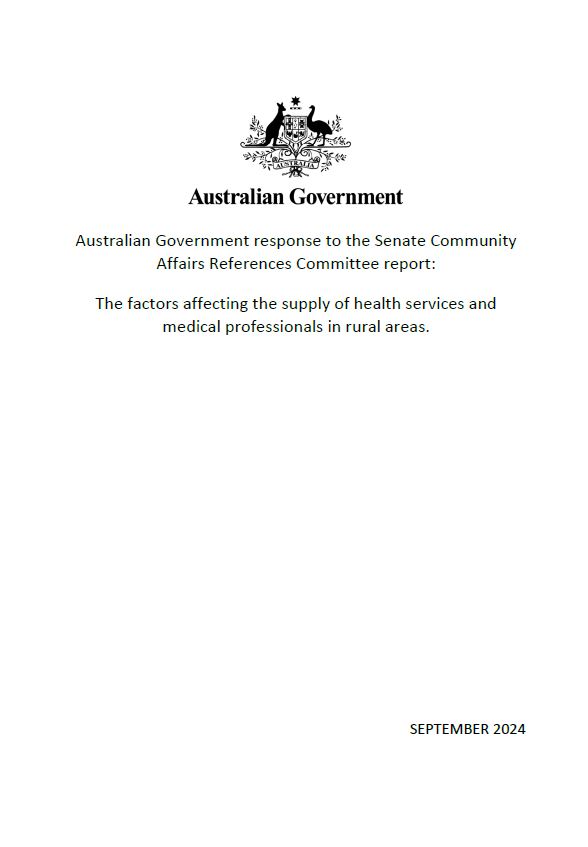
Factors affecting the supply of health services and medical professionals in rural areas
This document presents the Australian Government response to the Senate Community Affairs References Committee report: The factors affecting the supply of health services and medical professionals in rural areas. -

Statement of Expectations for the National Rural Health Commissioner – 2 September 2024 to 30 June 2026
This statement sets out the Australian Government’s expectations for the National Rural Health Commissioner for 2 September 2024 to 30 June 2026. -
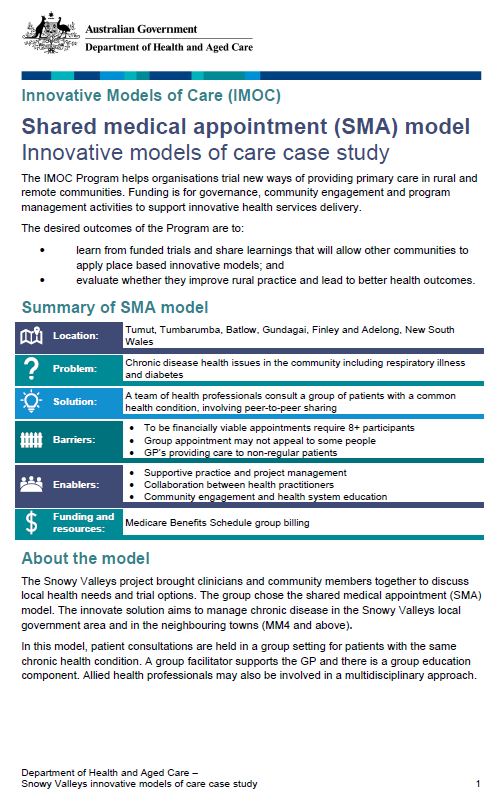
Case study – Snowy Valleys shared medical appointment model
The Snowy Valleys project is a shared medical appointment where health professionals consult patients with common health conditions, involving peer-to-peer sharing. This model included 3 separate trials, in which 2 produced sufficient billings through Medicare to satisfy participating GPs. -

Case study – Wentworth ACCHO-led sustainable GP model
An Aboriginal Medical Service opened networked primary care clinics after the local general practices closed. The model services the whole community and has outreach services to other communities. It has since attracted several GPs to Wentworth and maintained a quality primary care service. -
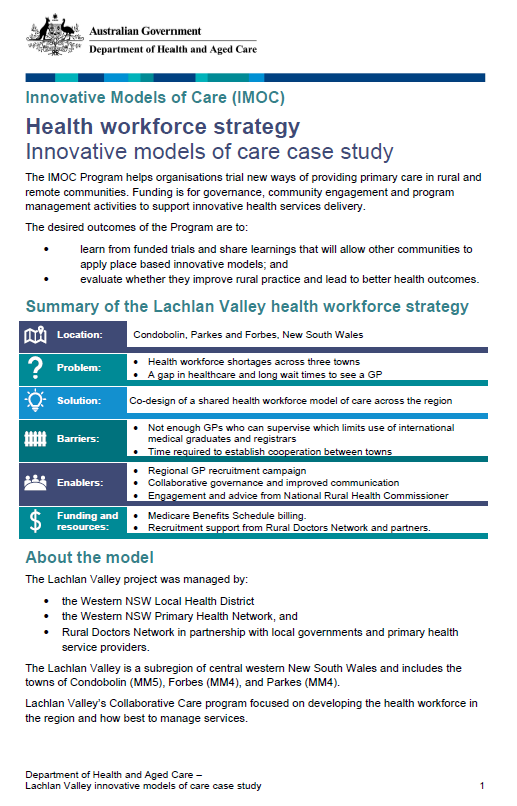
Case study – Lachlan Valley health workforce strategy
The Lachlan Valley trial aimed to test and evaluate unique models of primary care to meet community health needs in 3 rural NSW towns. No model of care was identified and trialled. However, by using a co-design process the communities identified solutions to improve access to primary health care. -
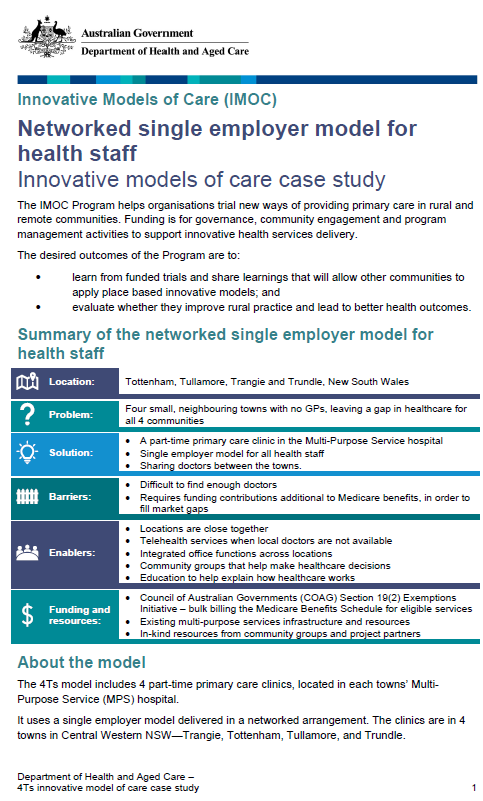
Case study – 4Ts networked single employer GP model
The towns of Trangie, Tottenham, Tullamore and Trundle have no GPs. The 4Ts model provides a single employer, and shares doctors between 4 part-time primary care clinics, located in each towns’ Multi-Purpose Service hospital. The model has decreased MPS emergency presentations and readmission rates. -
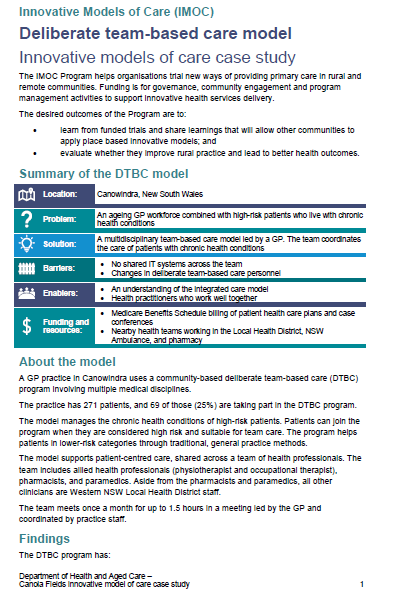
Case study – Canola Fields deliberate team-based care model
A GP practice in Canowindra uses a community-based deliberate team-based care (DTBC) program. The model supports patient-centred care, shared across a team of health professionals. The DTBC program has reduced hospitalisations, improved access to care, and reduced treatment waiting times.
